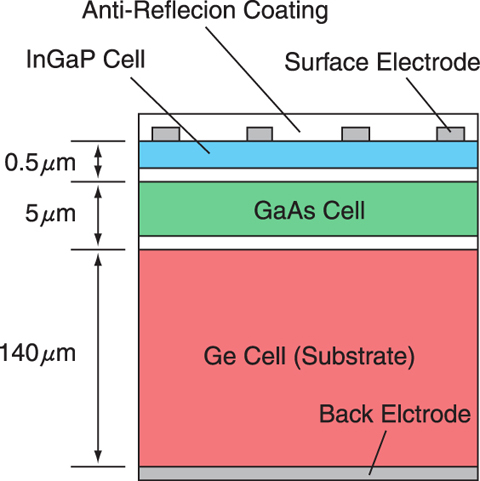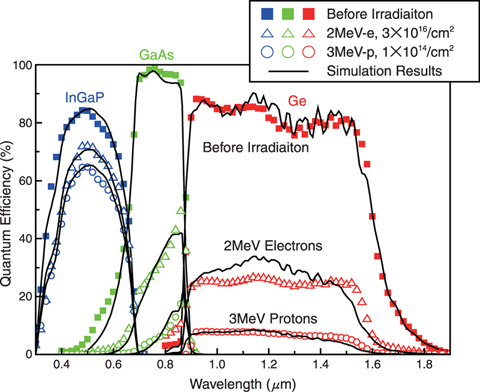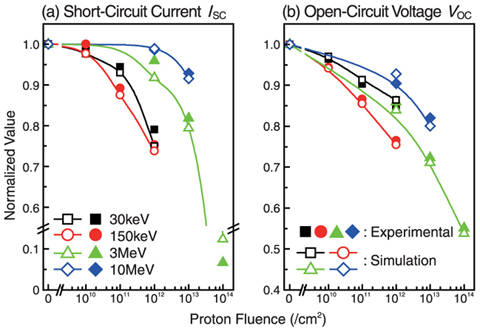
Fig.4-8 A cross-sectional diagram of InGaP/GaAs/Ge triple-junction solar cell

Fig.4-9 Quantum efficiencies of 3J cells irradiated with 3MeV protons or 2MeV electrons

Fig.4-10 Curves of (a) ISC and (b) VOC for 3J cells during four levels of proton irradiation
Since electric output from outer space solar cells mounted on satellites is degraded by space radiation (mainly electrons and protons), the amount of solar cells attached is determined considering the needed output at the end of the mission. Consequently, space solar cells are required to have both high conversion efficiency and high radiation tolerance. From the above facts, studies of radiation resistance of solar cells are carried out extensively using accelerators (ground tests). If accurate radiation degradation modeling of solar cells is developed, the number of tests for estimating the radiation degradation can be decreased and space solar cells can be developed more efficiently and economically. Recently, an InGaP/GaAs/Ge triple-junction solar cell (3J cell) as shown in Fig.4-8, which has very high conversion efficiency (~28%), has become the mainstream cell for outer space use. In this study, we clarified the radiation degradation behavior of the 3J cell by performing proton and electron irradiation experiments and by evaluating the degraded cell characteristics using an optical device simulator. We also developed a radiation degradation model on the basis of these results.
The quantum efficiency variations in the 3J cells due to 3MeV proton and 2MeV electron irradiation are shown in Fig.4-9. All the simulation results were in good agreement with the experimental results. Physical properties such as carrier concentration and diffusion length could be derived from the simulation results, and the cell performance (short-circuit current ISC and open-circuit voltage VOC) could be estimated from these physical properties. Fig.4-10 compares the experimentally measured ISC and VOC with these simulation results. The simulations nicely replicated the experimental values of both the proton and electron irradiations, though Fig.4-10 only shows the results of the proton irradiations. These results indicate that the degradation modeling proposed in this study is effective in predicting the radiation response of 3J cells.
In addition, radiation degradation behavior of the physical properties in each layer (InGaP, GaAs and Ge) can be systematically scaled using the Non-Ionizing Energy Loss (NIEL) index. Through this systematic scaling, it can be estimated how much the physical properties degrade due to space radiation exposure expected in a satellite mission. Simulating the cell performance based on the physical property degradation, we can predict the radiation degradation of 3J cells in actual space.